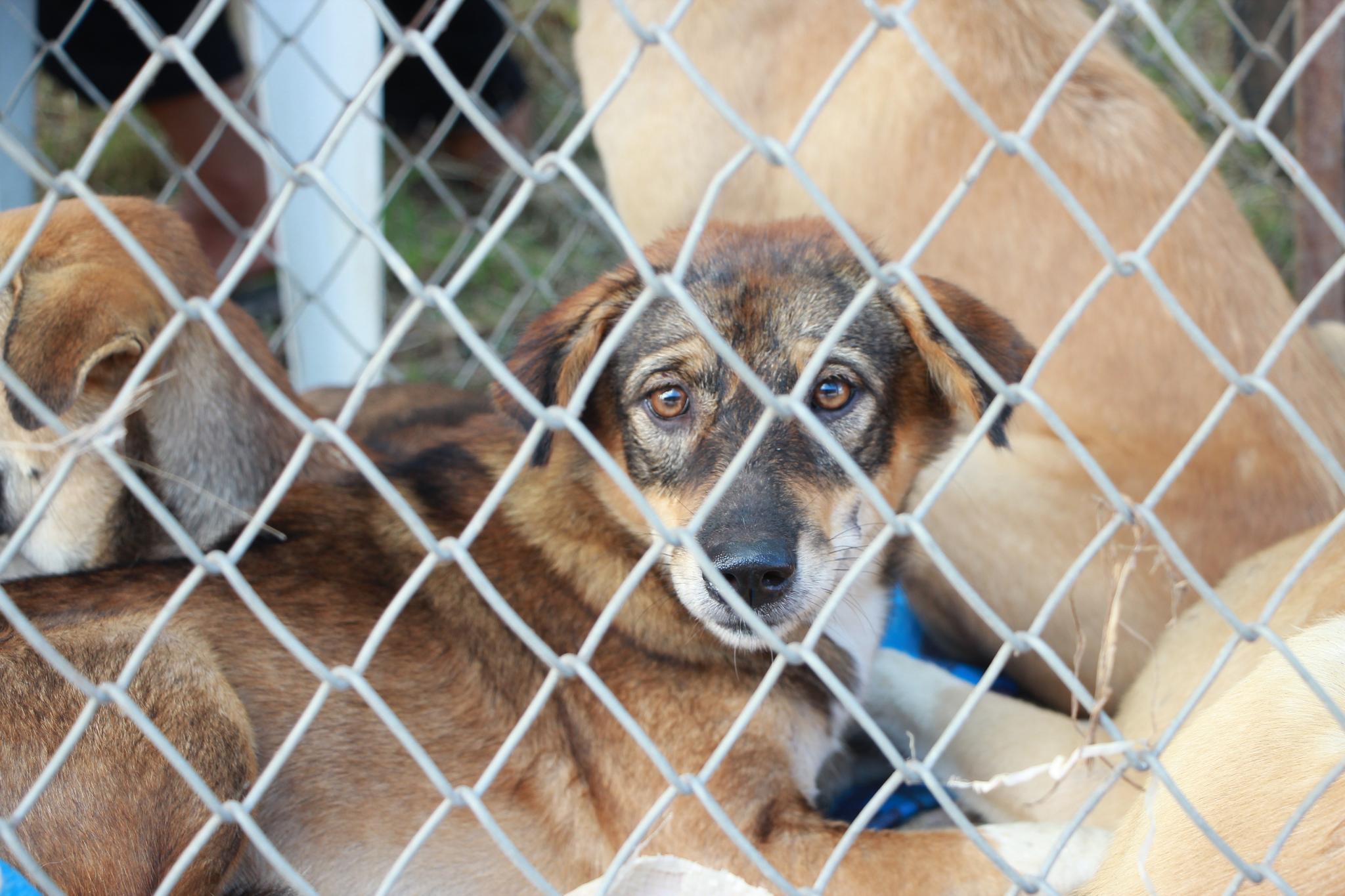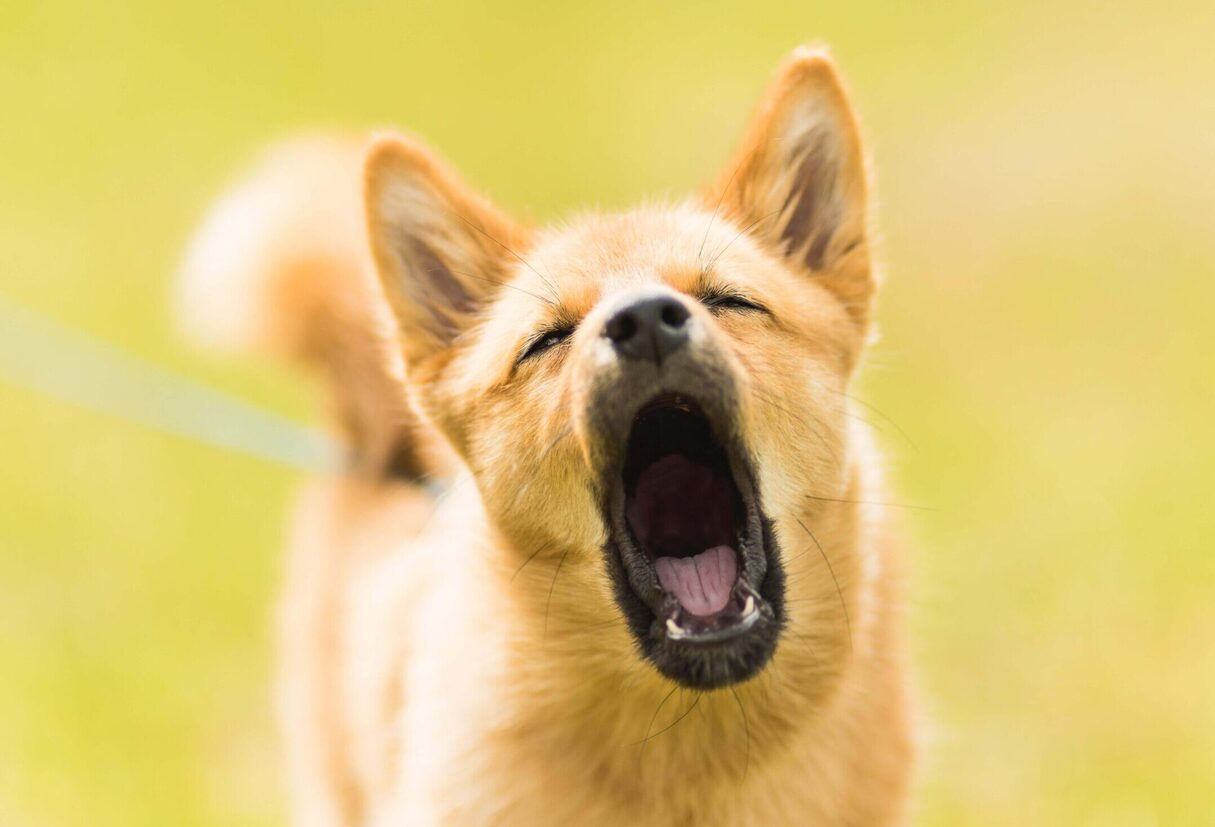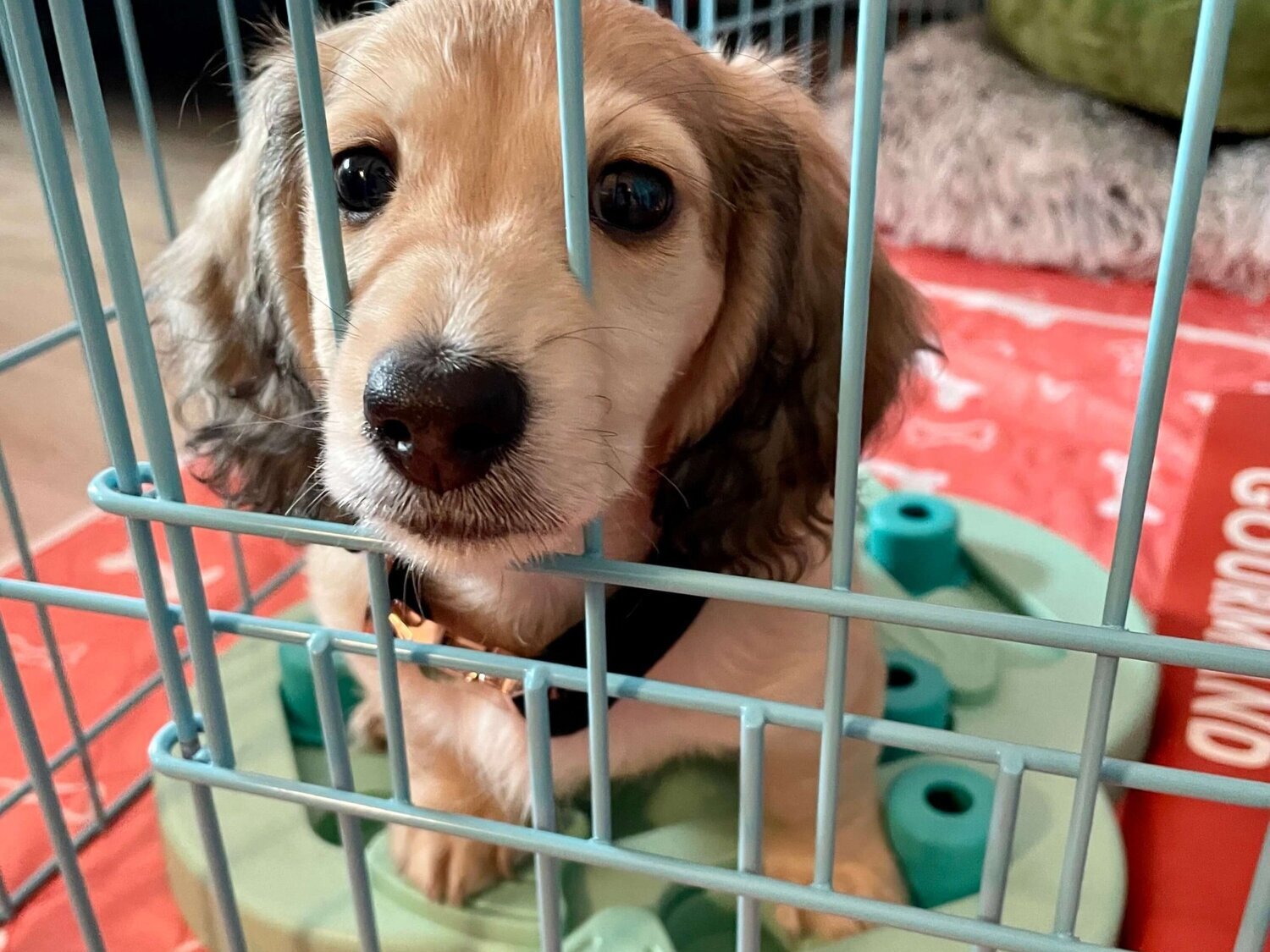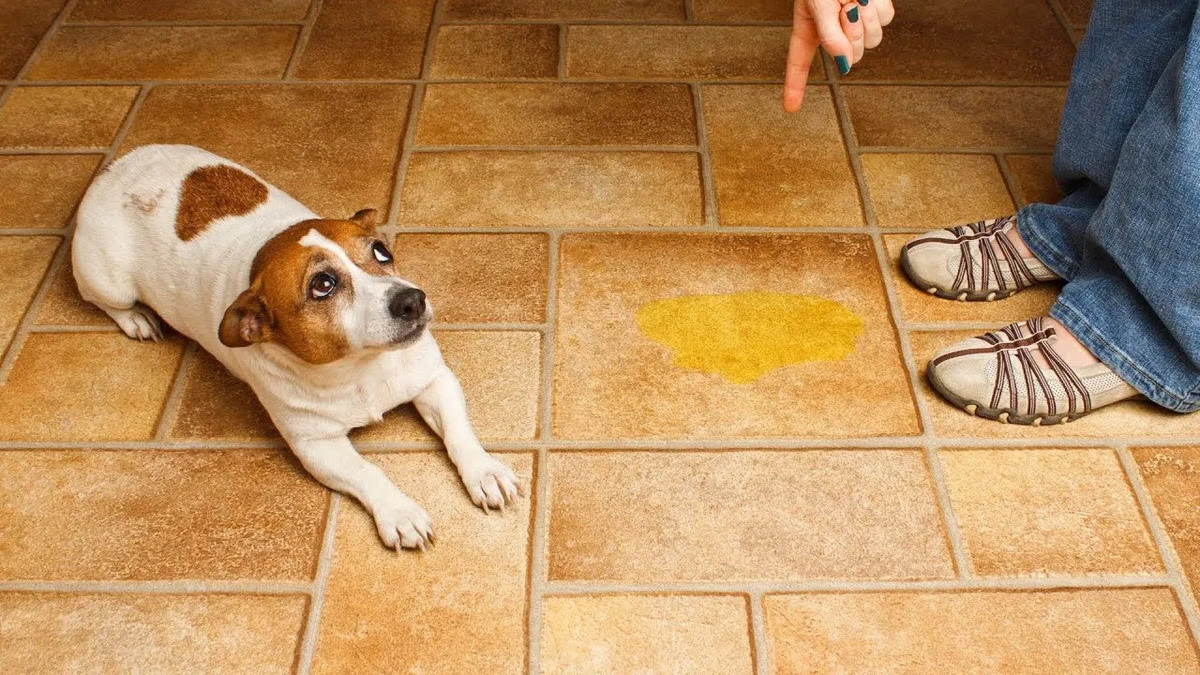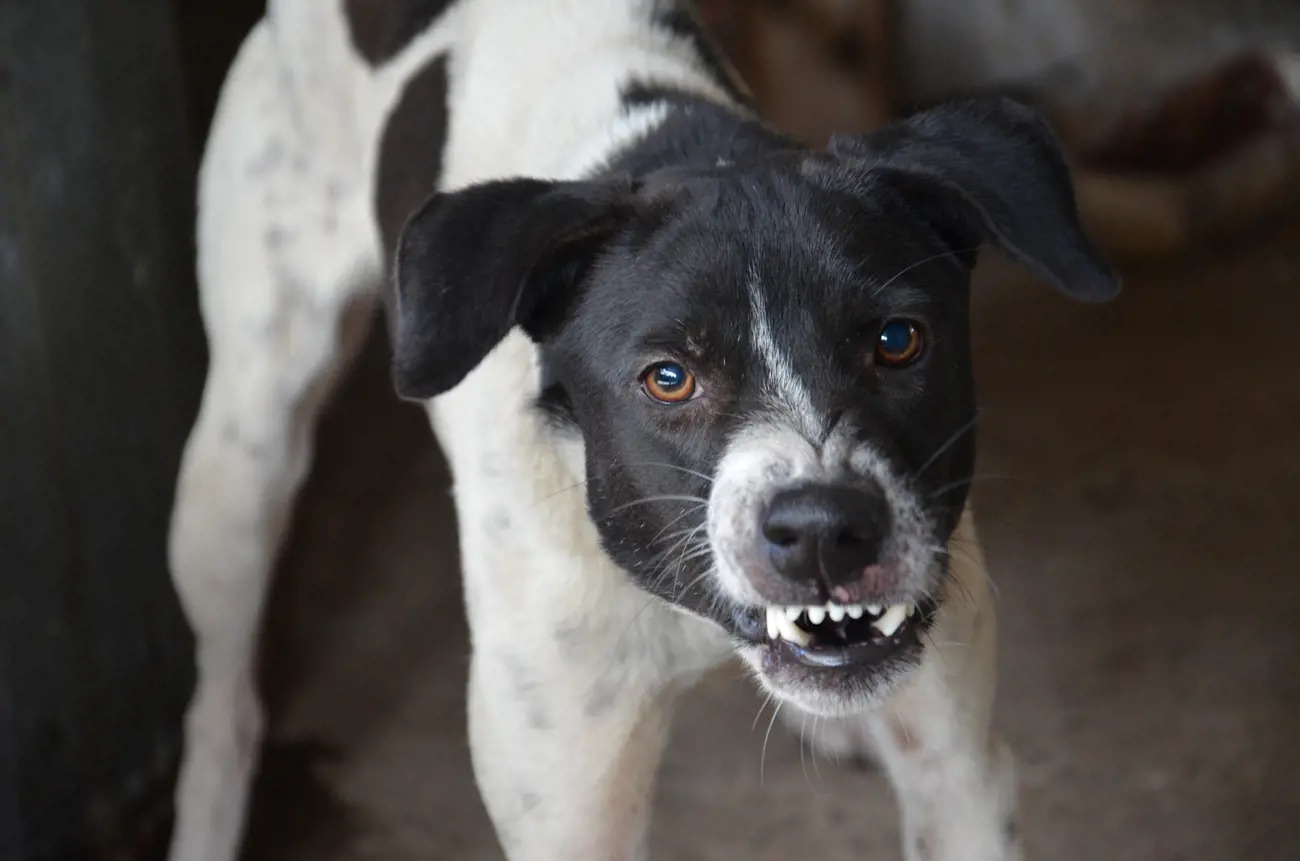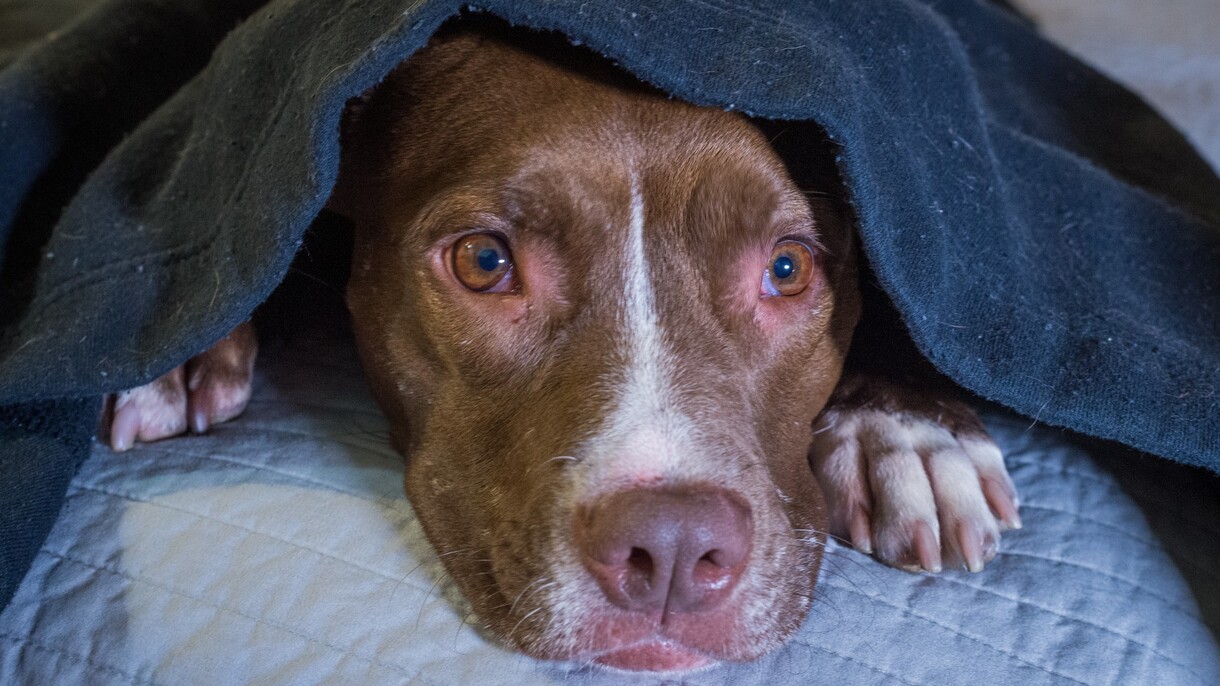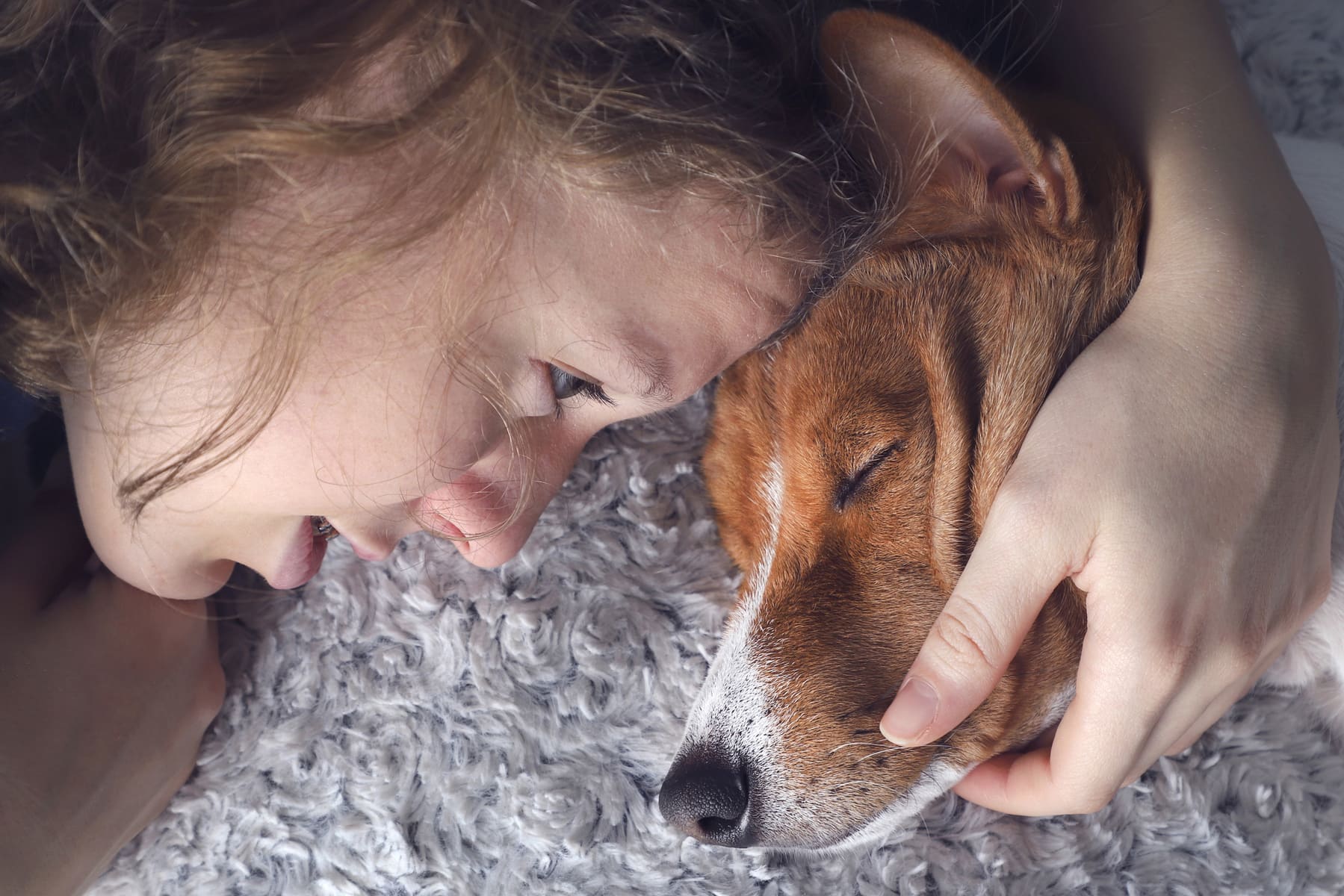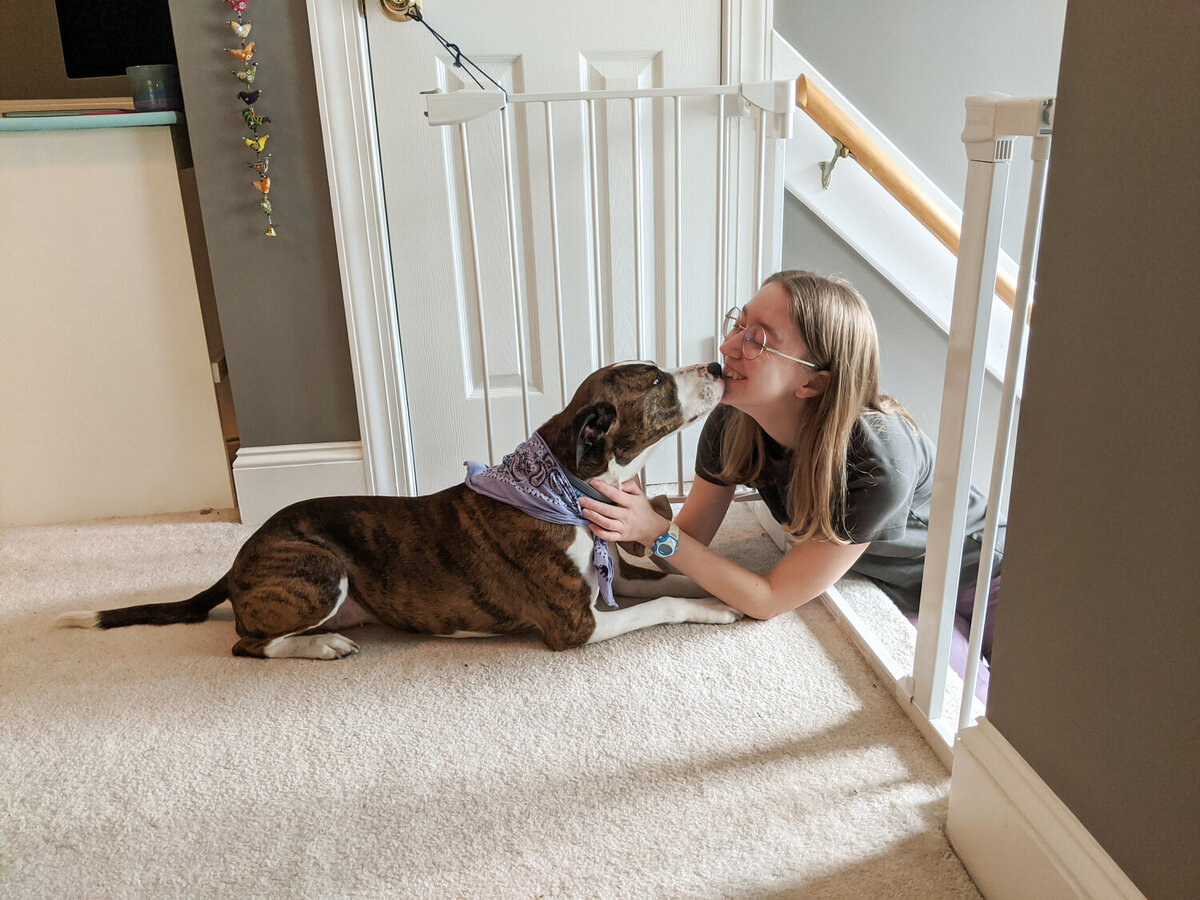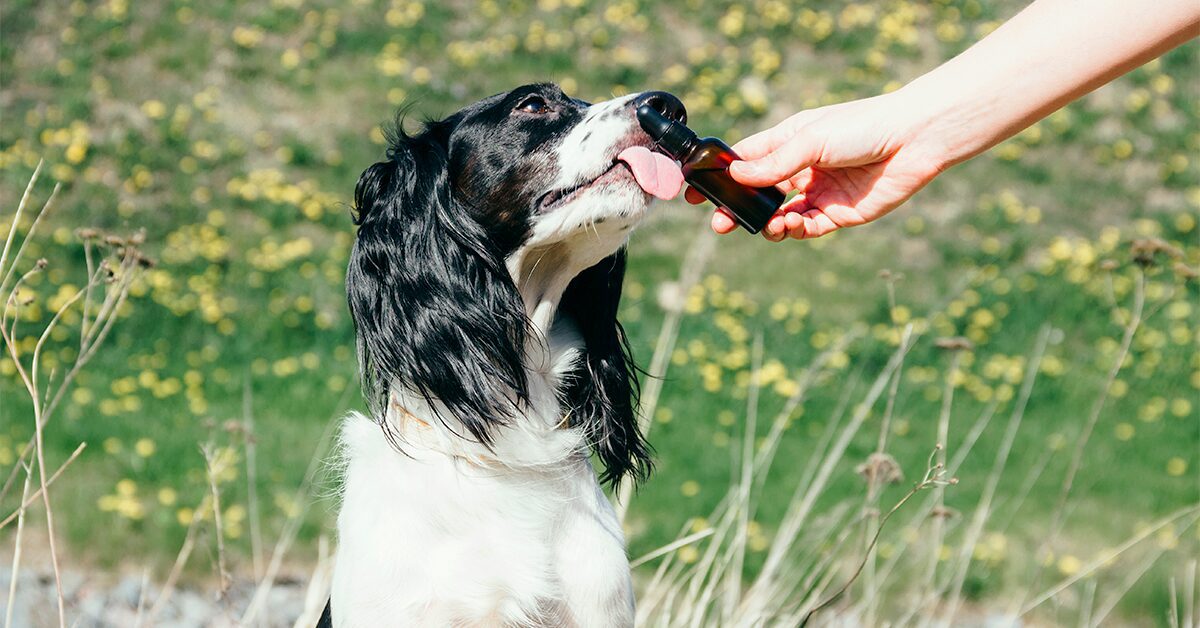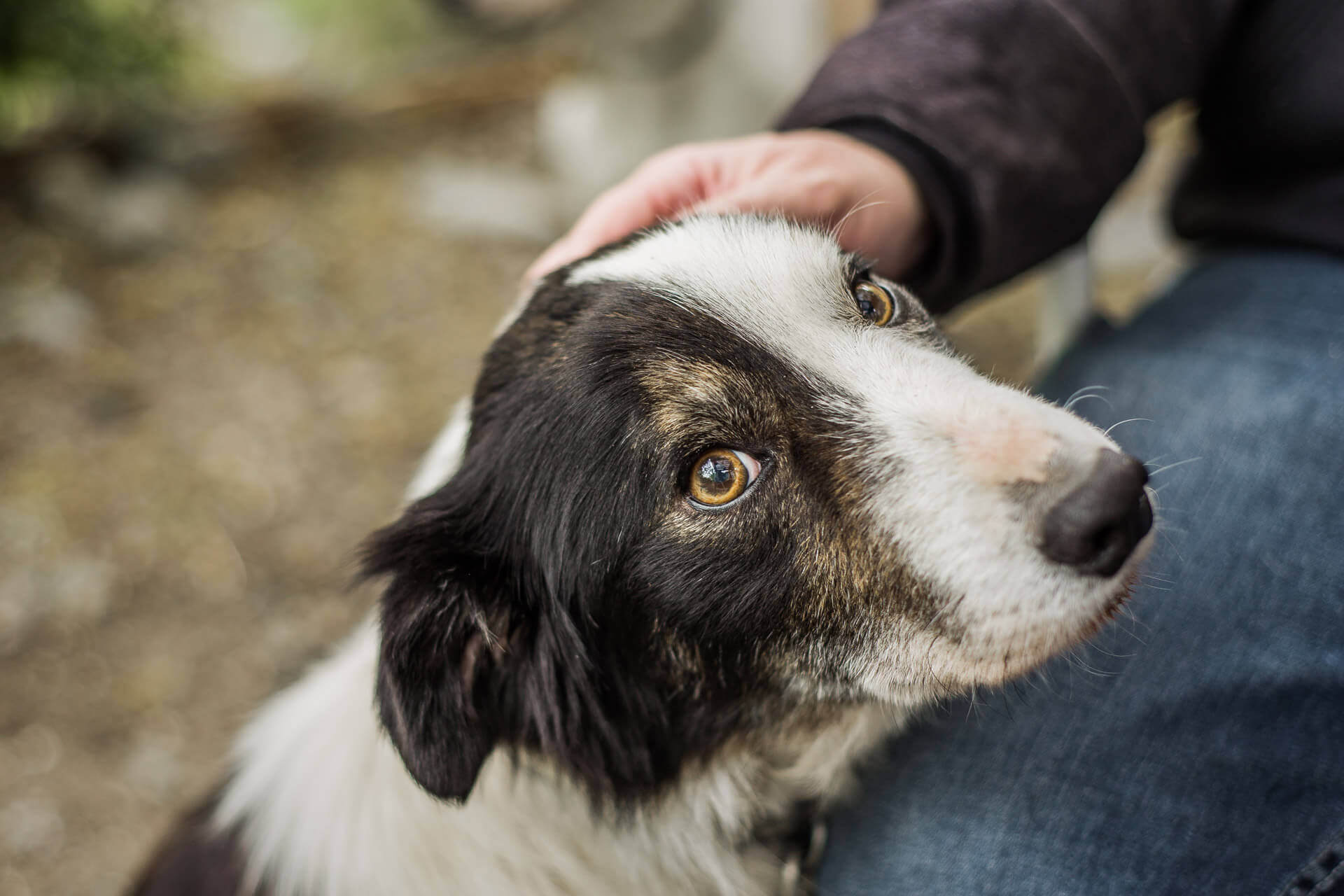Home>Health & Wellness>Behavior & Cognitive Care>How To Cut Dog Nails When Dealing With Anxiety
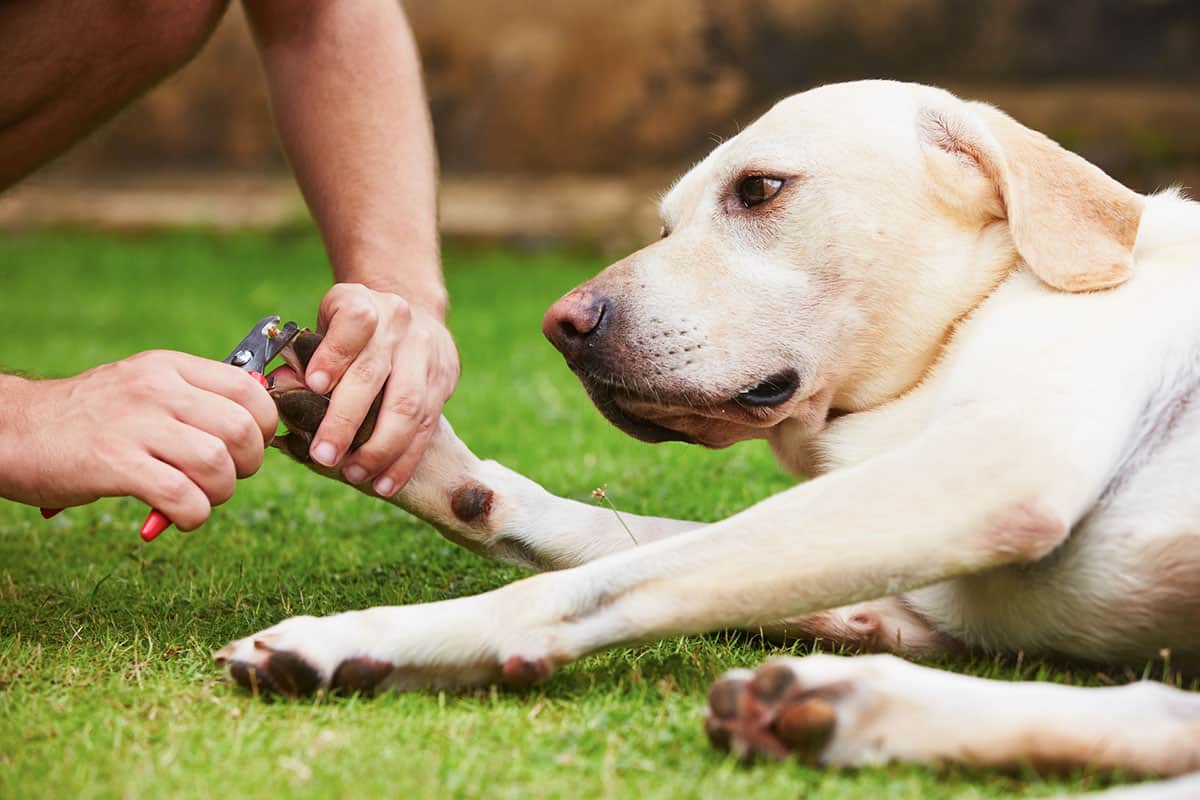

Behavior & Cognitive Care
How To Cut Dog Nails When Dealing With Anxiety
Published: January 29, 2024
Learn effective techniques for cutting your dog's nails when they're anxious. Discover behavior and cognitive care tips to ease the process.
(Many of the links in this article redirect to a specific reviewed product. Your purchase of these products through affiliate links helps to generate commission for Pawsomeoldies.com, at no extra cost. Learn more)
Table of Contents
Introduction
Dealing with an anxious dog can be a challenging and delicate task, especially when it comes to routine grooming activities such as nail trimming. Many dogs experience anxiety or fear when faced with the prospect of having their nails clipped, which can make the process stressful for both the pet and the owner. However, with the right approach and understanding, it is possible to alleviate your dog's anxiety and make the nail cutting experience a more positive and manageable one.
Understanding the root cause of your dog's anxiety is crucial in addressing the issue effectively. By recognizing the signs of anxiety in your dog and learning how to create a calm and reassuring environment, you can help your furry friend feel more at ease during nail trimming sessions. Additionally, being well-prepared and equipped with the right tools and techniques can significantly contribute to a successful and stress-free nail cutting experience for both you and your dog.
In this comprehensive guide, we will delve into the various aspects of dealing with an anxious dog during the nail cutting process. From understanding your dog's anxiety to preparing for the nail cutting procedure and implementing calming techniques, we will provide you with valuable insights and practical tips to help you navigate this common challenge with confidence and compassion. Whether you are a first-time dog owner or have been caring for dogs for years, this guide aims to equip you with the knowledge and strategies needed to address your dog's anxiety and ensure a positive nail trimming experience.
By following the step-by-step guidance and incorporating the suggested techniques, you can create a supportive and reassuring environment for your dog, ultimately fostering a sense of trust and security that can help alleviate their anxiety. With patience, empathy, and the right approach, you can transform the nail cutting process from a source of stress into a bonding opportunity that strengthens the relationship between you and your beloved canine companion.
Understanding Your Dog's Anxiety
Understanding your dog's anxiety is the first step towards addressing their apprehension during nail trimming. Dogs, like humans, can experience anxiety in various situations, and nail cutting is a common trigger for many pets. It's essential to recognize the signs of anxiety in your dog to effectively address their emotional state and create a supportive environment.
Signs of Anxiety:
- Paw Licking and Chewing: Excessive licking or chewing of their paws can indicate stress or discomfort, often associated with anxiety.
- Panting and Pacing: If your dog exhibits restless behavior, such as excessive panting and pacing, it may be a sign of anxiety.
- Avoidance Behavior: Dogs may try to avoid nail trimming by hiding, cowering, or displaying reluctance to approach the grooming area.
- Whimpering or Whining: Vocalizations such as whimpering, whining, or excessive barking can signal distress and anxiety.
- Tensed Body Language: Stiff posture, flattened ears, and dilated pupils are physical indicators of anxiety in dogs.
Causes of Anxiety:
- Previous Negative Experiences: If your dog has had a traumatic or painful nail trimming experience in the past, they may develop anxiety associated with the process.
- Lack of Familiarity: Dogs that are not accustomed to regular nail trimming may feel anxious due to the unfamiliarity of the procedure.
- Sensitive Feet: Some dogs have sensitive paws, and the sensation of nail clipping can cause discomfort, leading to anxiety.
- Environmental Factors: Loud noises, unfamiliar surroundings, or the presence of strangers during nail trimming can contribute to a dog's anxiety.
Empathy and Observation:
It's crucial to approach your dog's anxiety with empathy and keen observation. By understanding your dog's individual triggers and reactions, you can tailor your approach to alleviate their anxiety effectively. Pay attention to your dog's body language and vocalizations during grooming sessions to gauge their comfort level and emotional state.
Creating a Calm Environment:
Establishing a calm and reassuring environment is essential for managing your dog's anxiety during nail trimming. Choose a quiet and familiar space for the grooming process, minimizing external distractions and creating a sense of security for your dog. Additionally, incorporating positive associations, such as treats and soothing verbal cues, can help alleviate anxiety and build trust.
By recognizing the signs of anxiety, understanding the underlying causes, and approaching the situation with empathy and observation, you can take proactive steps to address your dog's anxiety during nail trimming. This foundational understanding sets the stage for implementing effective calming techniques and ensuring a positive grooming experience for your beloved pet.
Preparing for the Nail Cutting Process
Before embarking on the nail cutting process for your anxious dog, thorough preparation is key to ensuring a smooth and stress-free experience for both you and your pet. By taking the time to prepare adequately, you can set the stage for a successful nail trimming session while minimizing potential triggers for your dog's anxiety.
Creating a Comfortable Setting
Begin by selecting a quiet and familiar space for the nail cutting process. Choose an area where your dog feels at ease, such as a well-lit room with minimal distractions. Creating a comfortable setting can help alleviate your dog's anxiety and promote a sense of security during the grooming procedure.
Gathering the Necessary Tools
Ensure that you have all the essential tools and supplies within reach before initiating the nail cutting process. This includes a high-quality pair of dog nail clippers, styptic powder to address any potential bleeding, and a reliable source of lighting to ensure precision and safety during the procedure. Having these items readily available can streamline the process and minimize disruptions, contributing to a more relaxed environment for your dog.
Familiarizing Your Dog with the Tools
Introduce your dog to the nail clippers and other grooming tools in a non-threatening manner. Allow your pet to sniff and inspect the tools to familiarize them with these objects, helping to reduce any apprehension associated with their presence. By gradually acclimating your dog to the grooming tools, you can help mitigate their anxiety and build a positive association with the equipment.
Establishing a Calm Routine
Incorporate a consistent and calming routine leading up to the nail cutting process. Engage in activities that your dog enjoys, such as a leisurely walk or playtime, to promote relaxation and reduce any pent-up energy or nervousness. By establishing a soothing pre-grooming routine, you can help ease your dog's anxiety and create a conducive atmosphere for the upcoming nail trimming session.
Offering Reassurance and Support
Throughout the preparation phase, provide your dog with reassurance and gentle encouragement. Use soothing verbal cues and gentle petting to convey a sense of comfort and security, reinforcing a positive emotional state. By offering reassurance and support, you can help alleviate your dog's anxiety and foster a trusting bond that can positively influence their response to the nail cutting process.
By diligently preparing for the nail cutting process and implementing these proactive measures, you can significantly reduce your dog's anxiety and set the stage for a successful and harmonious grooming experience. This thoughtful preparation lays the foundation for implementing calming techniques and executing the nail trimming procedure with confidence and compassion.
Techniques for Calming Your Anxious Dog
Calming an anxious dog during the nail cutting process requires a thoughtful and empathetic approach. By incorporating specific techniques aimed at reducing stress and promoting relaxation, you can help your dog feel more at ease and receptive to the grooming procedure. Here are several effective techniques for calming your anxious dog:
Positive Reinforcement
Utilize positive reinforcement techniques to create a positive association with the nail cutting process. Offer verbal praise, gentle petting, and small treats to reward your dog for calm behavior and cooperation. By consistently reinforcing positive behavior, you can help alleviate anxiety and build confidence in your dog.
Desensitization
Gradually desensitize your dog to the sensation of having their paws handled and nails trimmed. Start by gently touching and massaging your dog's paws during regular interactions, gradually introducing the sensation of pressure and manipulation. This gradual exposure can help reduce sensitivity and anxiety related to paw handling.
Counterconditioning
Implement counterconditioning techniques to change your dog's emotional response to nail trimming. Pair the sight and sound of the nail clippers with enjoyable experiences, such as playtime or favorite treats. Over time, this association can help your dog view the grooming tools in a more positive light, reducing anxiety and apprehension.
Calming Aids
Consider using calming aids, such as pheromone diffusers or calming sprays, to create a soothing environment for your dog. These products release calming pheromones that can help reduce stress and anxiety, promoting a sense of relaxation during the nail cutting process.
Gentle Restraint
Employ gentle and reassuring restraint techniques to ensure your dog feels secure and supported during nail trimming. Use a calm and confident approach to gently hold your dog in place, providing a sense of stability and safety. Avoid excessive restraint, as it can exacerbate anxiety, and opt for gentle, reassuring touch.
Distraction Techniques
Engage your dog with interactive toys or puzzle feeders to provide mental stimulation and distraction during the nail cutting process. By redirecting your dog's focus, you can help alleviate anxiety and create a more relaxed grooming environment.
By incorporating these techniques into your approach, you can effectively calm your anxious dog and create a supportive atmosphere for the nail cutting process. Each method is designed to reduce stress and promote a positive experience, ultimately contributing to a successful and harmonious grooming session for both you and your beloved pet.
Step-by-Step Guide to Cutting Your Dog's Nails
Trimming your dog's nails requires patience, precision, and a gentle approach, especially when dealing with an anxious pet. By following a step-by-step process and incorporating calming techniques, you can ensure a safe and comfortable nail cutting experience for your dog.
-
Preparation: Begin by gathering all necessary tools, including dog-specific nail clippers and styptic powder to address potential bleeding. Choose a well-lit and quiet area for the nail trimming process, ensuring minimal distractions to promote a calm environment.
-
Comforting Your Dog: Before initiating the nail cutting, offer reassurance and gentle petting to help your dog feel at ease. Use soothing verbal cues and maintain a calm demeanor to convey a sense of security and support.
-
Handling the Paws: Gently hold your dog's paw, applying light pressure to extend the nails. Take note of the quick, the sensitive area within the nail, and ensure to avoid cutting into it to prevent discomfort and bleeding.
-
Trimming Technique: Carefully position the nail clippers and trim the tip of the nail in small increments, avoiding sudden movements that may startle your dog. Utilize the calming techniques previously mentioned to maintain a relaxed atmosphere throughout the process.
-
Observation and Reward: Monitor your dog's body language and reactions during the nail cutting, pausing if signs of distress are evident. Offer verbal praise and small treats as positive reinforcement for cooperative behavior, reinforcing a positive association with the grooming procedure.
-
Addressing Bleeding: In the event of accidental bleeding, apply styptic powder to the affected nail to promote clotting and alleviate any discomfort. Remain calm and reassuring to help your dog feel secure during this process.
-
Post-Trimming Comfort: After completing the nail cutting, offer additional reassurance and gentle praise to reassure your dog. Engage in a calming activity or provide a favorite treat to further reinforce a positive experience.
By following this step-by-step guide and incorporating calming techniques, you can navigate the nail cutting process with care and compassion, ensuring a positive and stress-free experience for your anxious dog. Remember to approach the procedure with patience and empathy, prioritizing your dog's comfort and well-being throughout the grooming session.
Tips for Dealing with Unexpected Reactions
Dealing with unexpected reactions from an anxious dog during the nail cutting process requires quick thinking and a calm, composed approach. Despite thorough preparation and the implementation of calming techniques, dogs may still exhibit unexpected behaviors or responses during grooming. It is essential to be prepared to address such reactions effectively, ensuring the safety and well-being of both your dog and yourself.
Read more: Do Dogs Get Anxiety When You Hug Them?
Stay Calm and Patient
In the face of unexpected reactions, maintaining a calm and patient demeanor is paramount. Dogs are highly attuned to human emotions, and displaying a sense of composure can help mitigate escalating anxiety or fear. By remaining composed, you can convey a reassuring presence to your dog, potentially diffusing the situation and promoting a sense of security.
Assess the Trigger
When faced with an unexpected reaction, take a moment to assess the potential trigger for your dog's response. It could be a specific movement, sound, or sensation that has caused discomfort or anxiety. Identifying the trigger can help you adjust your approach and minimize further distress for your dog.
Provide Reassurance and Support
Offer verbal reassurance and gentle physical support to comfort your dog during unexpected reactions. Use soothing tones and comforting gestures to convey a sense of safety and understanding. Reassure your dog that they are in a secure environment and that you are there to support them through any discomfort.
Pause and Regroup
If your dog exhibits a strong or unexpected reaction, consider pausing the nail cutting process to allow both you and your pet to regroup. Take a step back and provide a brief break to alleviate any escalating tension. This pause can help reset the atmosphere and provide an opportunity to approach the grooming procedure with a renewed sense of calm.
Read more: How To Ease Anxiety In Dogs
Adjust the Approach
Based on your assessment of the trigger and your dog's reaction, consider adjusting your approach to the nail cutting process. This may involve modifying the handling of your dog's paws, altering the pace of the trimming, or introducing additional calming techniques to address the unexpected reaction effectively.
Seek Professional Assistance
In cases where unexpected reactions persist or escalate, seeking professional assistance from a certified dog trainer or behaviorist may be beneficial. These experts can provide tailored guidance and techniques to address your dog's specific reactions and anxiety, ultimately contributing to a more positive grooming experience in the long term.
By being prepared to handle unexpected reactions with a composed and empathetic approach, you can navigate the nail cutting process with resilience and understanding. Each unexpected reaction presents an opportunity to further strengthen the bond with your dog and refine your approach to grooming, ultimately fostering a sense of trust and security for your anxious pet.
Conclusion
In conclusion, addressing an anxious dog's apprehension during the nail cutting process requires a combination of empathy, preparation, and effective calming techniques. By understanding the signs and causes of anxiety in dogs, pet owners can tailor their approach to create a supportive and reassuring environment for their furry companions. The step-by-step guide to preparing for and executing the nail trimming process, along with the proactive measures for dealing with unexpected reactions, serves as a comprehensive resource for pet owners seeking to alleviate their dog's anxiety during grooming.
It is crucial to recognize that each dog is unique, and their responses to nail trimming may vary. Therefore, patience and adaptability are essential when navigating the grooming experience. By incorporating positive reinforcement, desensitization, and counterconditioning techniques, pet owners can gradually help their dogs build confidence and reduce anxiety associated with nail cutting. Additionally, the use of calming aids and gentle restraint can contribute to a more relaxed atmosphere, promoting a sense of security for the anxious pet.
The step-by-step guide provides a structured approach to nail trimming, emphasizing the importance of maintaining a calm and patient demeanor throughout the process. By prioritizing the comfort and well-being of the dog, pet owners can foster a positive association with grooming activities, ultimately strengthening the bond between the pet and the owner.
In instances of unexpected reactions, the ability to stay composed, assess triggers, and provide reassurance is paramount. These moments present opportunities for learning and adjustment, allowing pet owners to refine their approach and further understand their dog's individual needs and sensitivities.
Overall, the journey of addressing an anxious dog's anxiety during nail trimming is a collaborative effort between the pet owner and the pet. By approaching the process with empathy, understanding, and a willingness to adapt, pet owners can create a nurturing and supportive environment that promotes a positive grooming experience for their beloved canine companions. With the right approach and a commitment to building trust and confidence, the nail cutting process can evolve from a source of anxiety into a bonding opportunity, strengthening the relationship between the pet and the owner.
